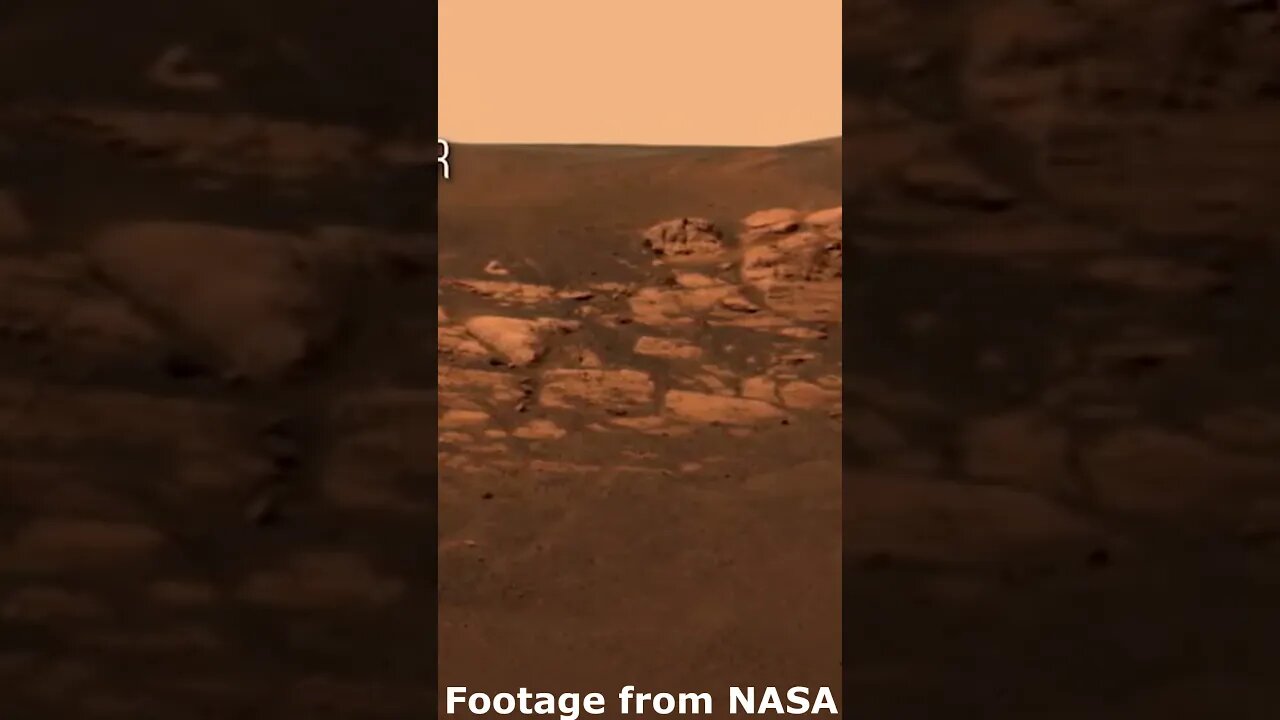Premium Only Content

Is This Factual? Chinese Mars Rover Landing 99% perfect
Source : https://www.cnet.com/news/china-mars-rover-zhurong-makes-historic-landing-on-the-red-planet/
Video : https://www.youtube.com/watch?v=1Ll-VHYxWXU
Some quick Science based news. I am not a journalist just a guy sharing science and tech news I find interesting.
#Shorts #Zhurong #Mars
Want to support Channel?
-----------------------------
Leaving a Tip : https://www.paypal.me/agrosquerril
Buying me a coffee : https://ko-fi.com/agrosquerrilnarrates
Becoming a Patreon : https://www.patreon.com/agrosquerrils
MERCH Store : https://teespring.com/stores/asn-3
-----Socials-----
Email : [email protected]
Twitter : https://twitter.com/agrosquerrils
Streamlabs : https://streamlabs.com/agrosquerrils
Discord : https://discord.gg/XeMwEqX
Instagram : Agro_Squerril_Narrates
Lbry : @AgroSquerrilNarrates
--------------
What is a Rover?
-----------
A Mars rover is a motor vehicle that travels across the surface of the planet Mars upon arrival. Rovers have several advantages over stationary landers: they examine more territory, they can be directed to interesting features, they can place themselves in sunny positions to weather winter months, and they can advance the knowledge of how to perform very remote robotic vehicle control.
As of May 2021, there have been six successful robotically operated Mars rovers, the first five managed by the American NASA Jet Propulsion Laboratory: Sojourner (1997), Opportunity (2004), Spirit (2004), Curiosity (2012), and Perseverance (2021). The sixth is Zhurong (2021), managed by the China National Space Administration.
On January 24, 2016, NASA reported that current studies on Mars by Curiosity and Opportunity (the latter now defunct) would be searching for evidence of ancient life, including a biosphere based on autotrophic, chemotrophic or chemolithoautotrophic microorganisms, as well as ancient water, including fluvio-lacustrine environments (plains related to ancient rivers or lakes) that may have been habitable.[2][3][4][5][6] The search for evidence of habitability, taphonomy (related to fossils), and organic carbon on Mars is now a primary NASA objective.[2]
Mars 2 and Mars 3 were physically tethered probes; Sojourner was dependent on the Mars Pathfinder base station for communication with Earth; Opportunity, Spirit and Curiosity were on their own. As of May 2021, Curiosity is still active, while Spirit, Opportunity, and Sojourner completed their missions before losing contact. On February 18, 2021, Perseverance, the newest American Mars rover, successfully landed. On May 14, 2021, China's Zhurong became the first non-American rover to successfully operate on Mars.
-----------
Wikipedia
What is Mars?
-------------
Mars is the fourth planet from the Sun and the next planet beyond Earth. It is, on average, more than 142 million miles from the Sun. Mars turns on its axis more slowly than Earth does. So, a day on Mars is 24.6 hours. Since this planet is farther from the Sun than Earth, one revolution of Mars around the Sun is a longer trip. So, a year on Mars is 687 Earth days. Mars is about half the size of Earth. Mars is known as the Red Planet because the iron oxide chemicals in its soil looks like rust.
Mars is named for the ancient Roman god of war. The Greeks called the planet Ares (pronounced Air-EEZ). The Romans and Greeks associated the planet with war because its color resembles the color of blood.
Mars has two small moons. Their names are Phobos (FOE-bohs) and Deimos (DEE-mohs). They are named for the sons of Ares, the Greek god of war. Phobos means “fear,” and Deimos means “panic.”
------------
From Nasa.gov
What is Mars Like?
-----------
Mars is very cold. The average temperature on Mars is minus 80 degrees Fahrenheit -- way below freezing!
Its surface is rocky, with canyons, volcanoes, dry lake beds and craters all over it. Red dust covers most of its surface. Mars has clouds and wind just like Earth. Sometimes the wind blows the red dust into a dust storm. Tiny dust storms can look like tornados, and large ones can be seen from Earth. Mars’ large storms sometimes cover the entire planet.
Mars has about one-third the gravity of Earth. A rock dropped on Mars would fall more slowly than a rock falls on Earth. A person who weighs 100 pounds on Earth would only weigh about 38 pounds on Mars because of the reduced gravity.
The atmosphere of Mars is much thinner than Earth’s. The Red Planet's atmosphere contains more than 95% carbon dioxide and much less than 1% oxygen. People would not be able to breathe the air on Mars.
-----------
From Nasa.gov
-
 15:11
15:11
Agro Squerril Narrates
1 year ago $0.31 earnedThe 'Cuteness' | 2256 | Humans and Humanity are OP | Best of HFY
1.56K1 -
 LIVE
LIVE
VINCE
1 hour agoThey're Coming For You Next | Episode 163 - 11/06/25
33,101 watching -
 LIVE
LIVE
Right Side Broadcasting Network
13 hours agoLIVE: President Trump Makes an Announcement - 11/6/25
2,010 watching -
 1:42:05
1:42:05
Graham Allen
2 hours agoTrump And Vance Show The Path For Winning!!! WE MUST FIGHT! + Erika Kirk Reveals All!
77.1K30 -
 LIVE
LIVE
LadyDesireeMusic
56 minutes agoLive Piano & Convo - Rumble Rants and Sub Request
222 watching -
 1:10:27
1:10:27
Chad Prather
17 hours agoThe Secret To Pleasing The Lord Over Man!
55.1K45 -
 LIVE
LIVE
LFA TV
12 hours agoLIVE & BREAKING NEWS! | THURSDAY 11/6/25
3,448 watching -
 52:16
52:16
American Thought Leaders
19 hours agoIs There a Link Between Mass Shootings and SSRIs?
46.6K57 -
 17:12
17:12
World2Briggs
20 hours ago $0.04 earnedTop 10 Towns You Can Retire or Live on $1900 a month in the Midwest #1
33.2K21 -
 17:25
17:25
BlackDiamondGunsandGear
1 day agoCustom Building the Cheapest MP5
29.5K1